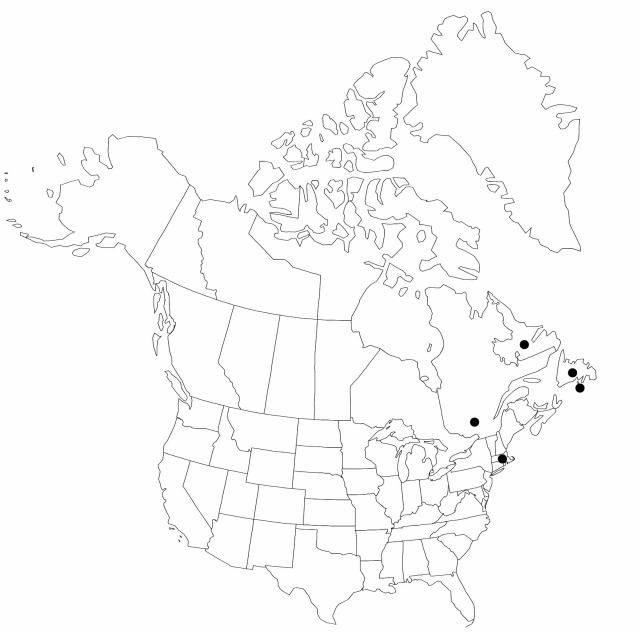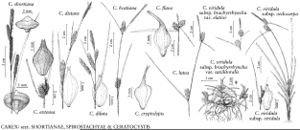Carex hostiana
Cat. Pl. Hort. Monsp., 88. 1813.
Plants not cespitose. Culms straight, 25–60 cm. Leaves of flowering-stems shorter than stem, to 13.5 cm × 1.5–3.1 (–4.3) mm. Inflorescences: peduncles of staminate spikes 5–70 mm; bracts 90 × 0.7–2.2 mm; inner band of sheaths with brown, convex projection to 3.2 mm. Spikes: proximal pistillate spikes 1–3 (–4), distant, erect or ascending, usually conspicuously pedunculate, ovoid to short-cylindric, proximal 10–20 × 5–9.5 mm; terminal staminate spikes 10–33 × 1.6–4.2 mm. Scales: pistillate scales dark-brown, 2.1–3.9 × 1.4–2.4 mm, margins conspicuously white-hyaline; staminate scales with broad, white, hyaline margins. Anthers 2–3.6 mm. Perigynia ascending, yellowish, 3.1–5.5 × 1.2–2.1 mm, apex gradually narrowed into straight, serrulate beak; beak 0.7–1.6 mm. Achenes 1.5–2 × 1–1.5 mm.
Phenology: Fruiting Jul–Aug.
Habitat: Moist to wet, open fens and meadows, on lime-rich soils
Elevation: 0–500 m
Distribution

St. Pierre and Miquelon, Nfld. and Labr., Que., Mass., Europe
Discussion
Carex hostiana was last collected in Massachusetts prior to 1836.
Selected References
None.
Lower Taxa
"shortened" is not a number.
